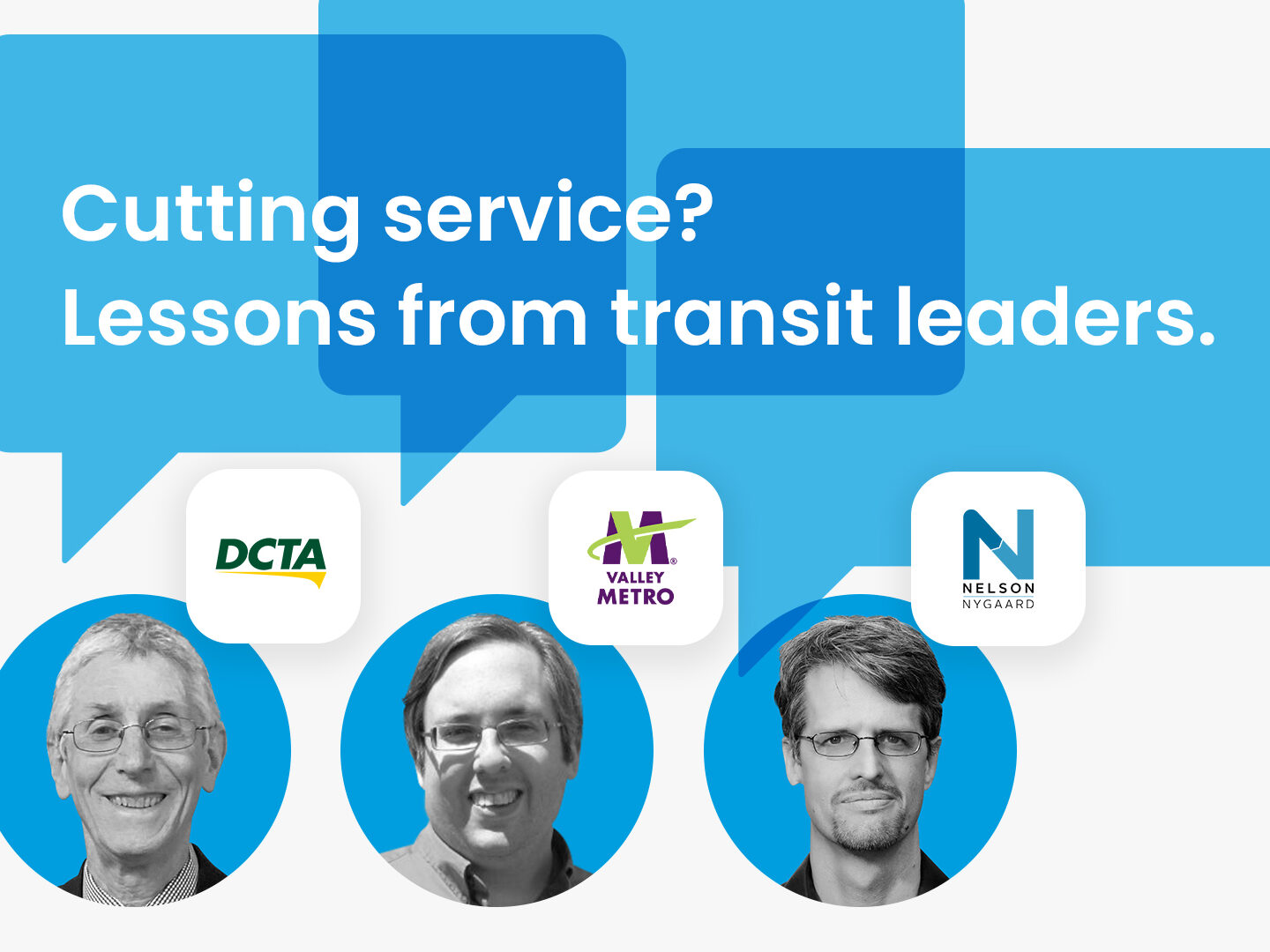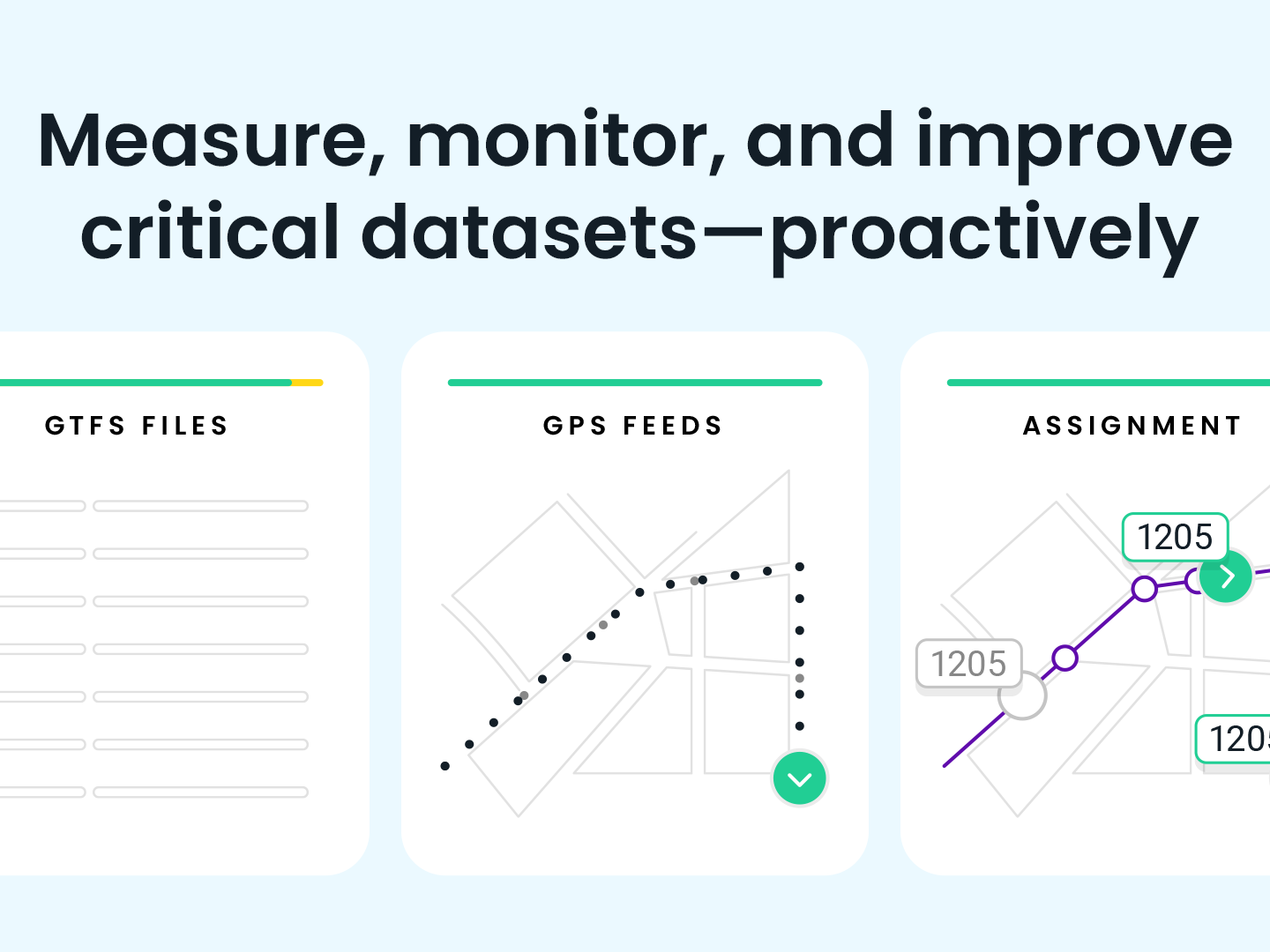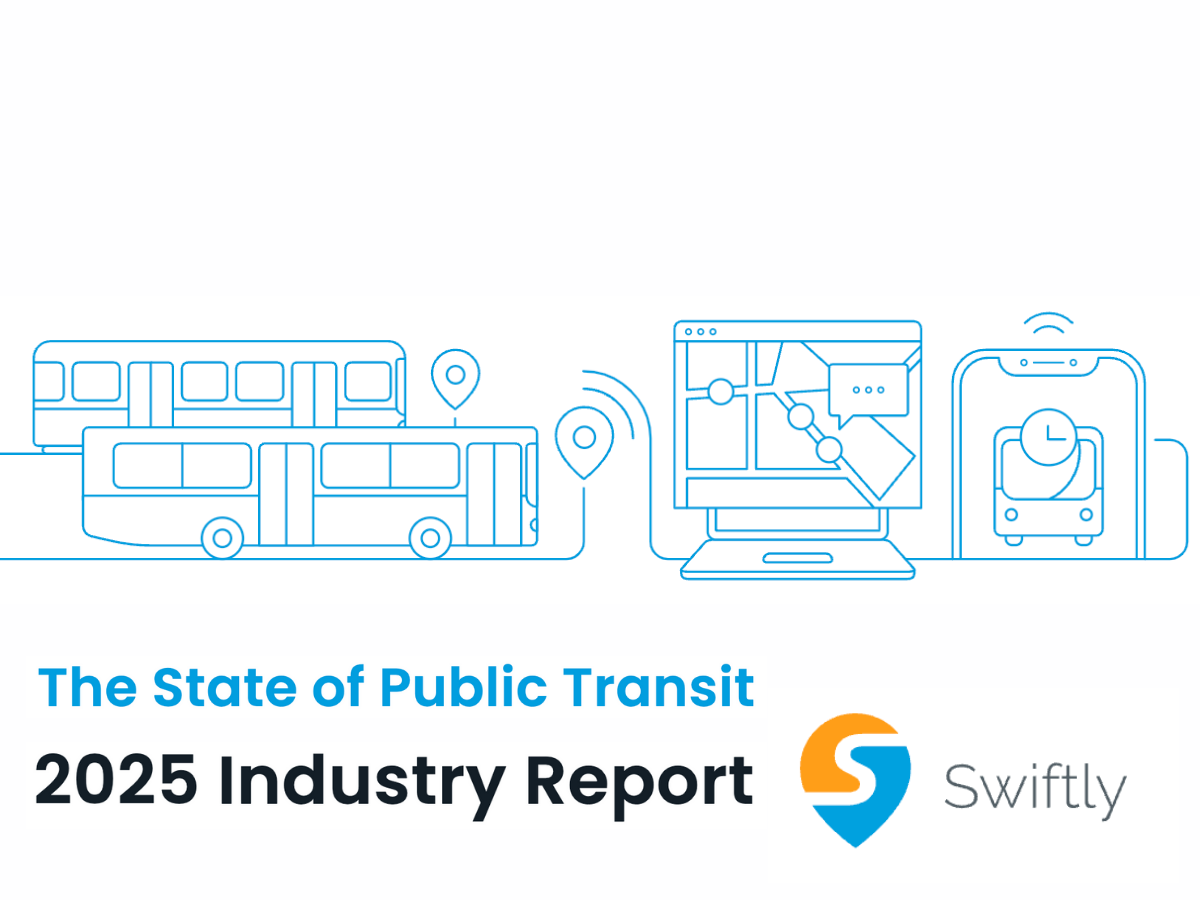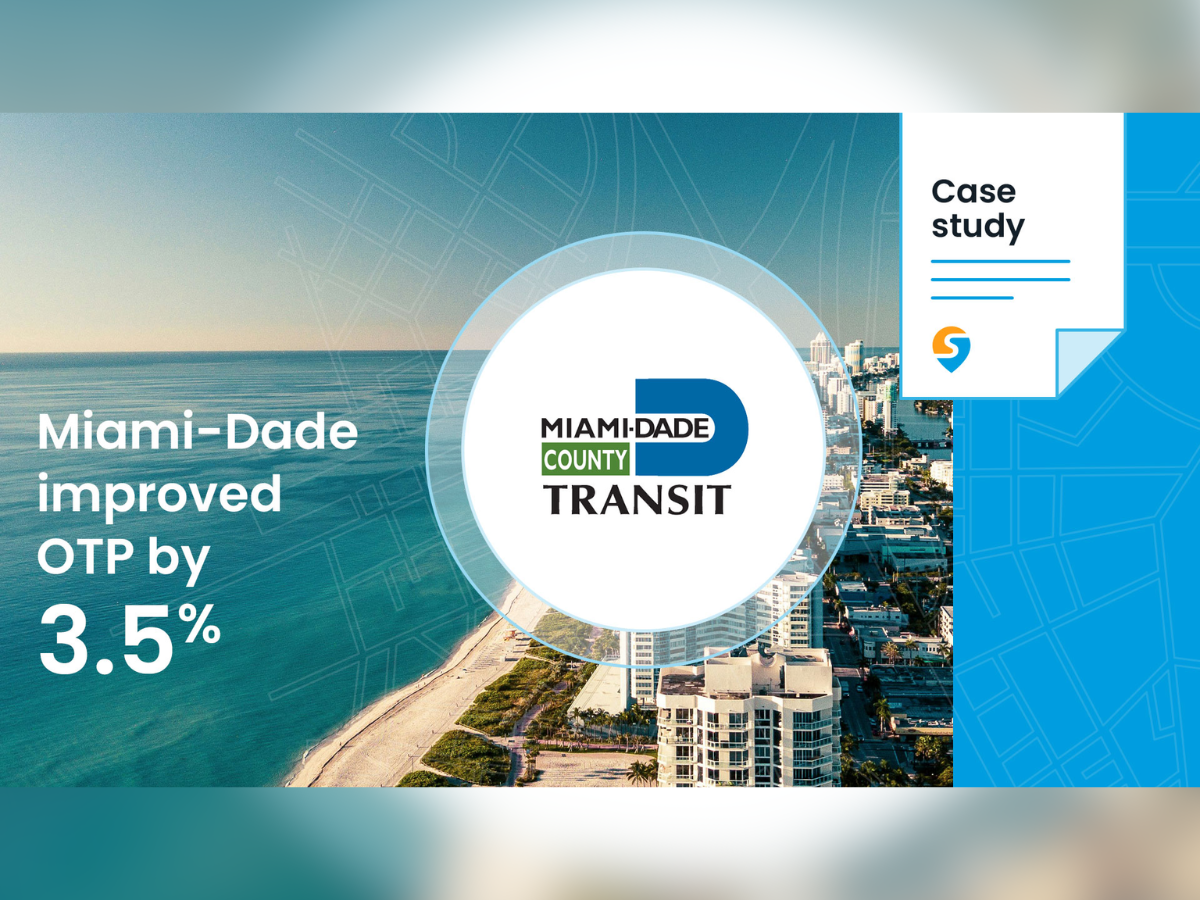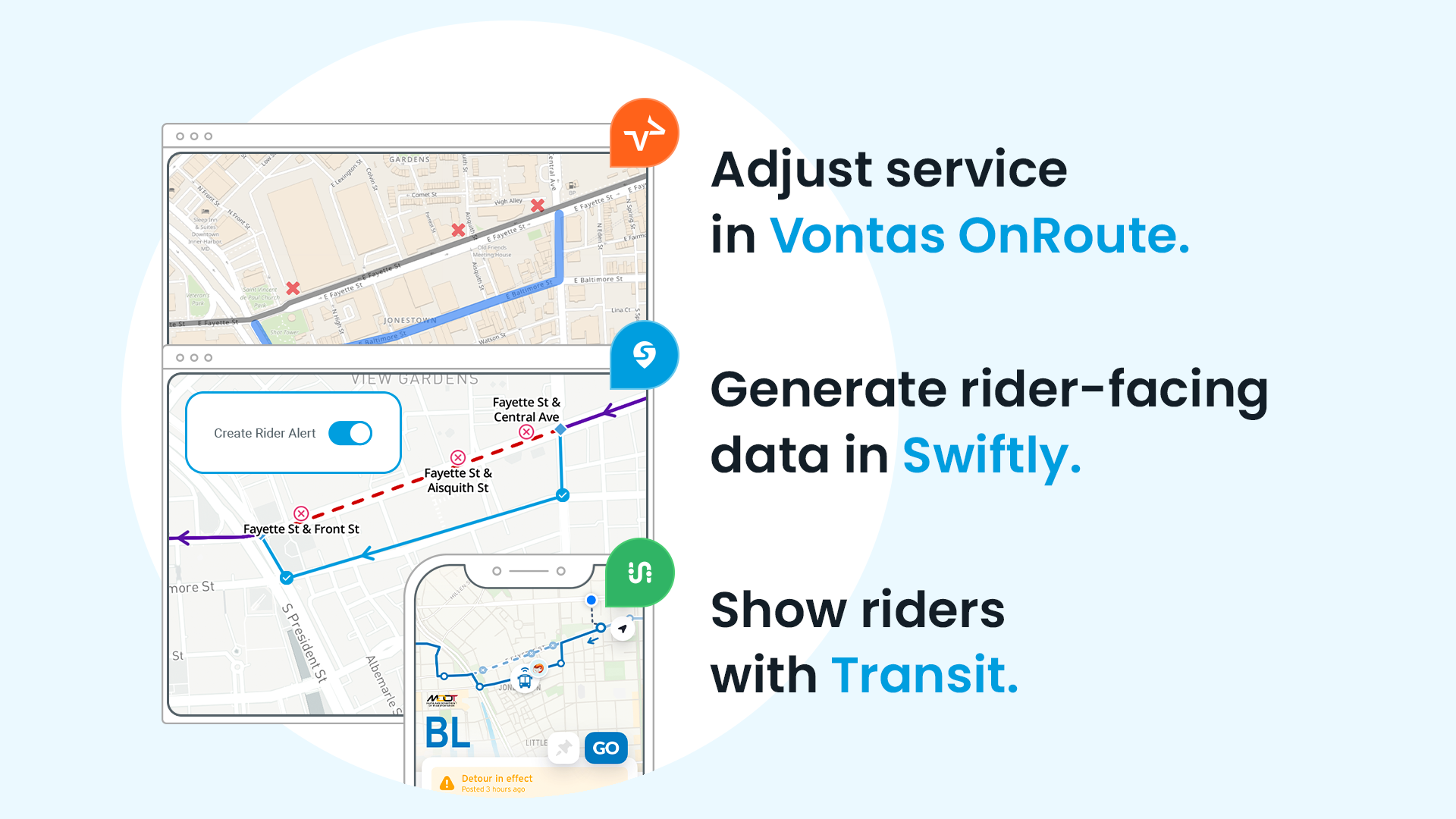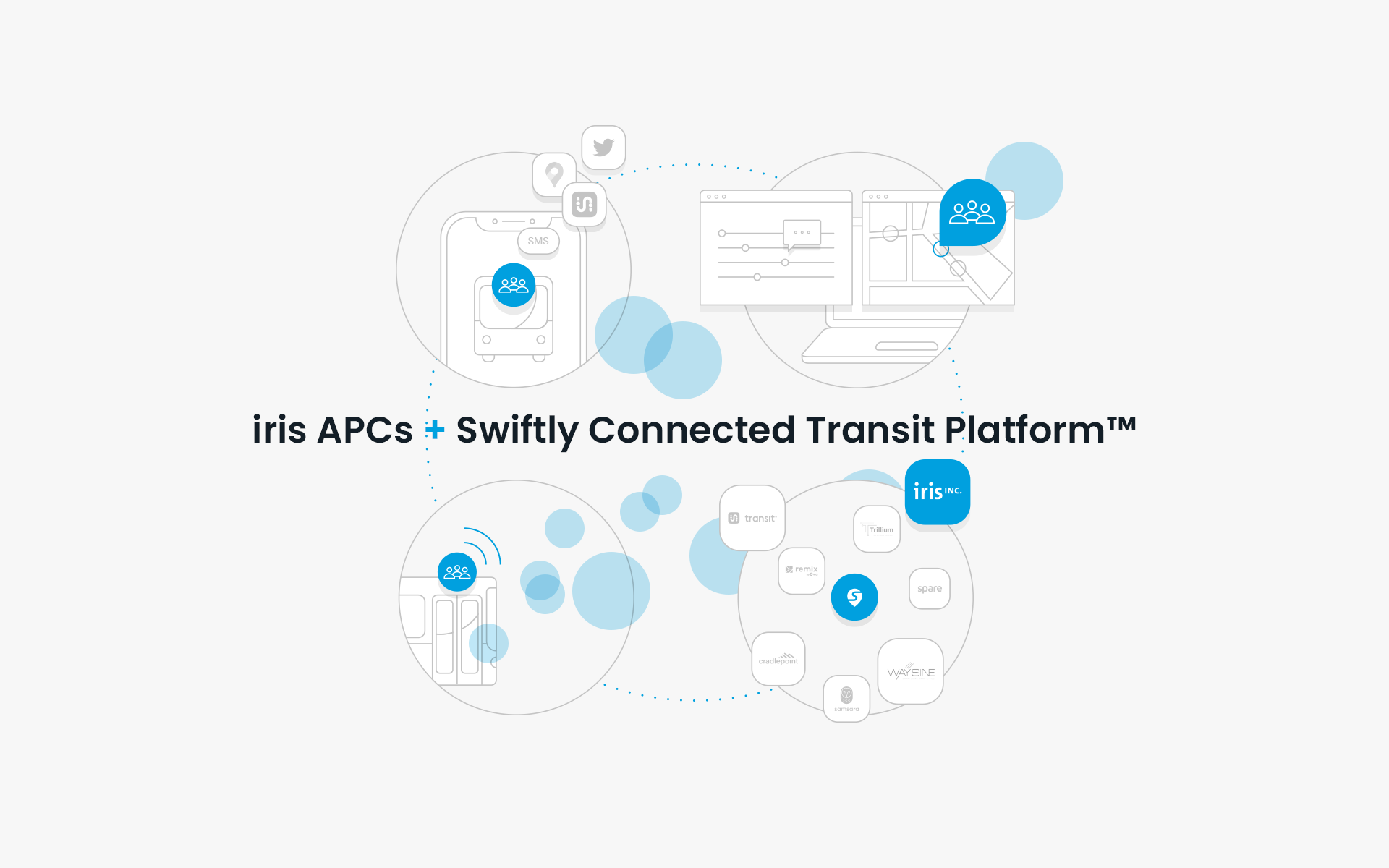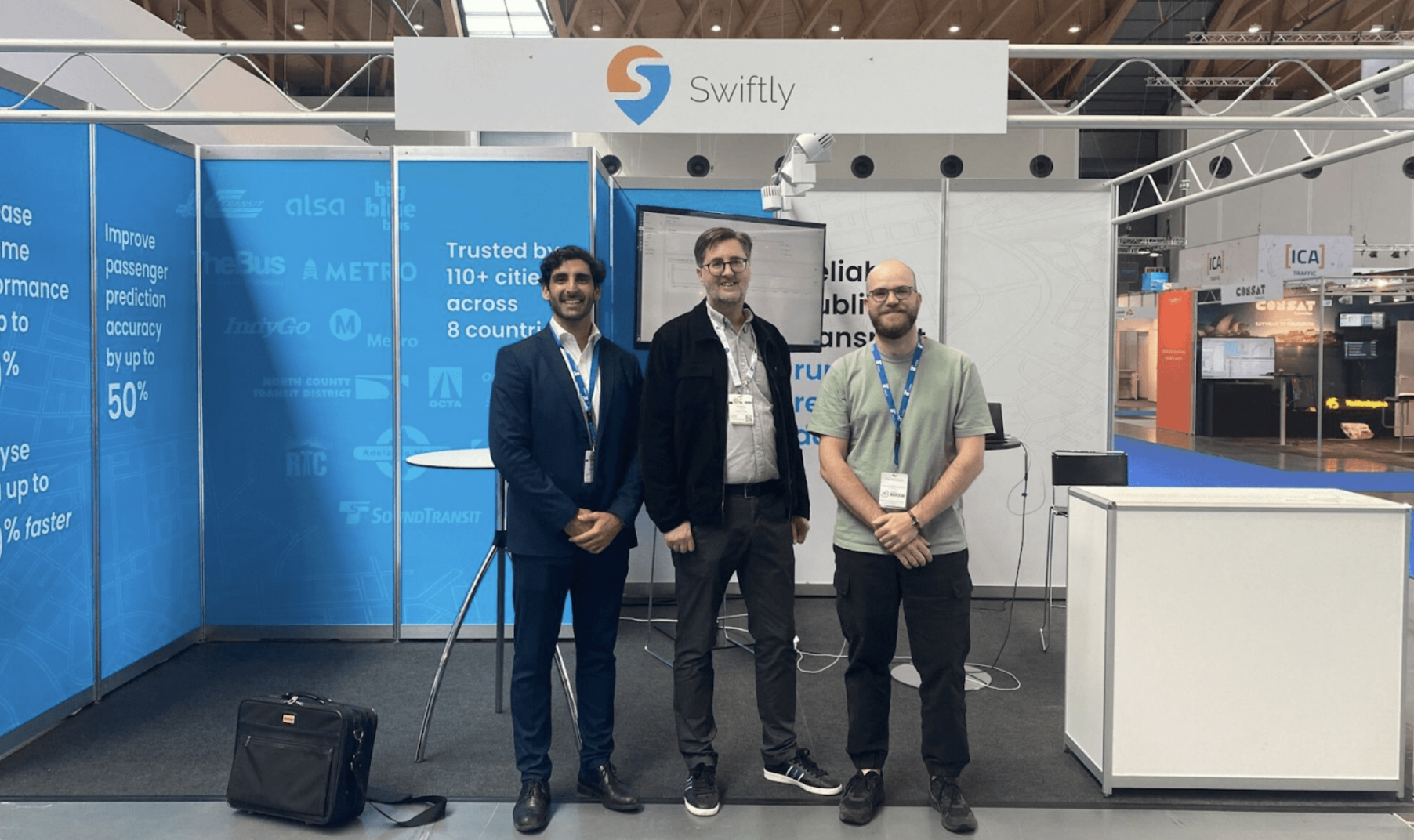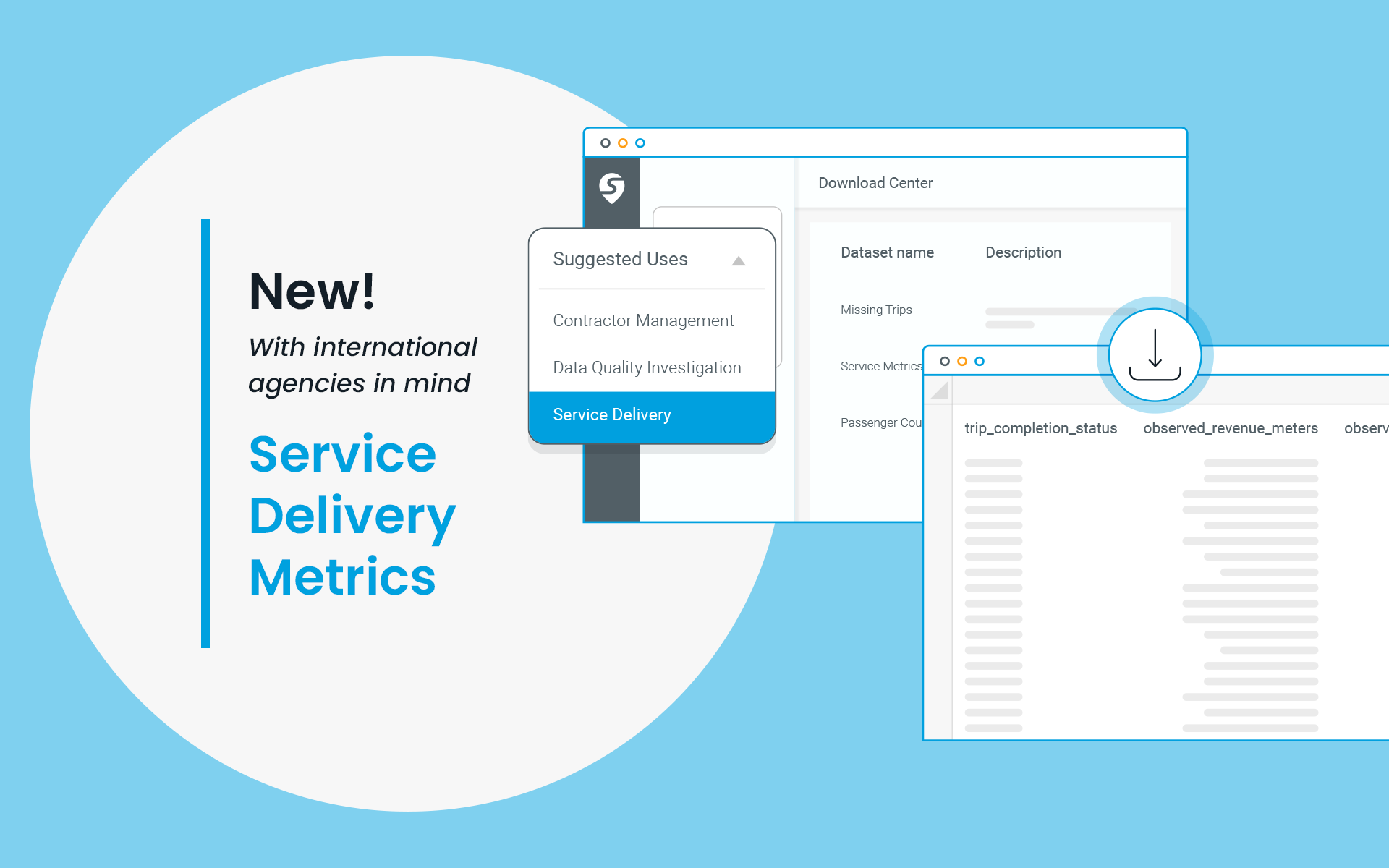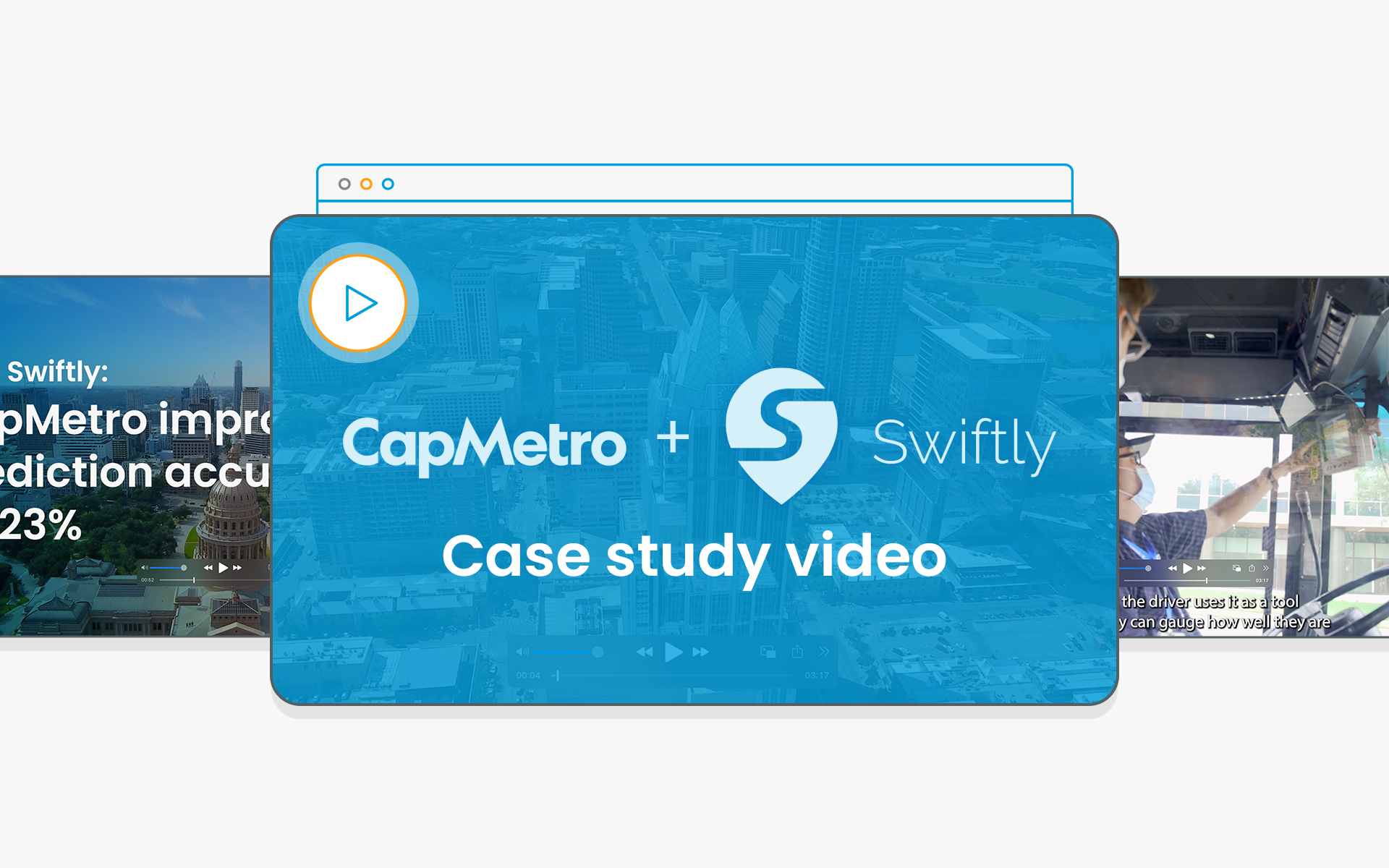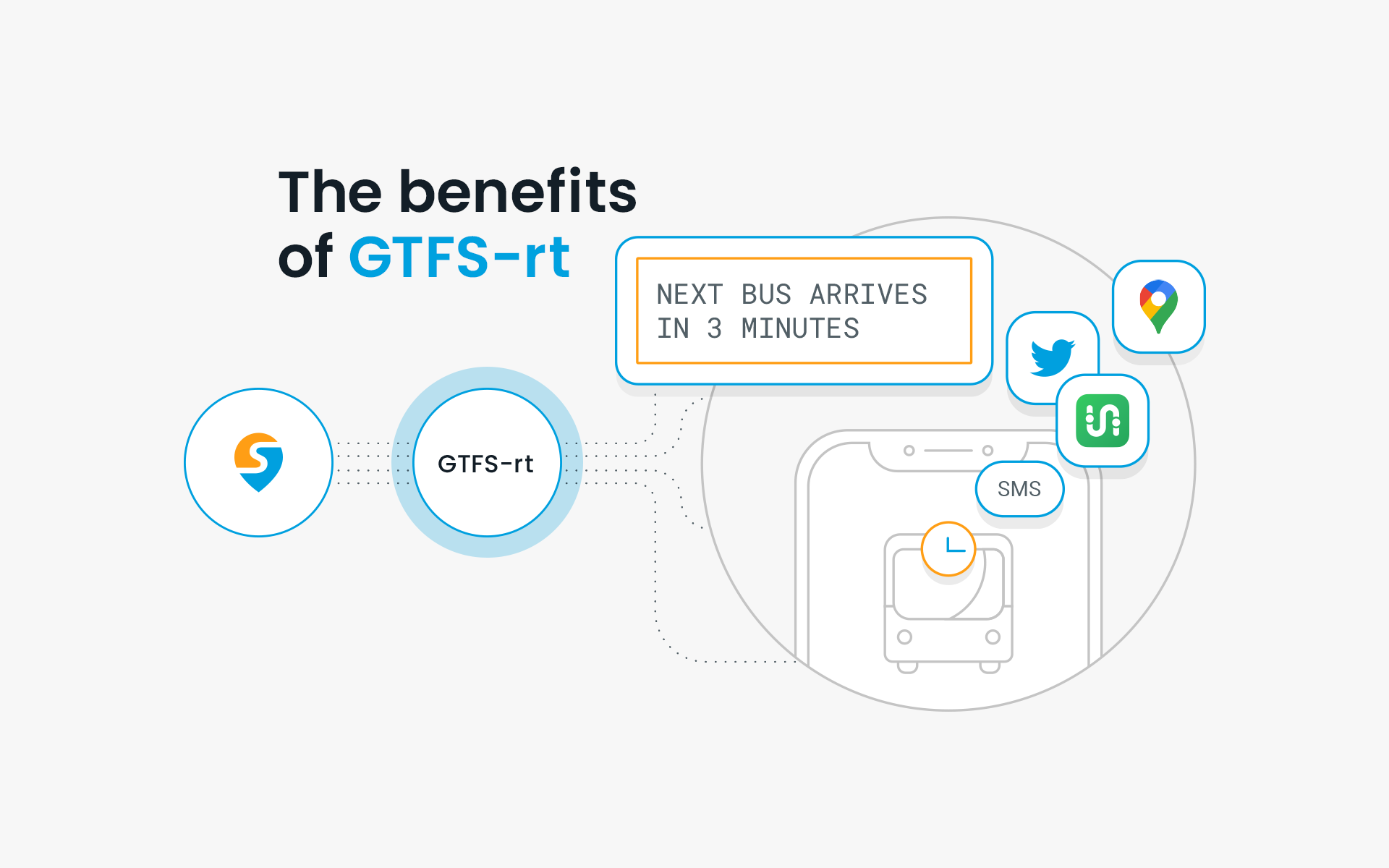A Conversation with Modaxo’s Paul Comfort on Navigating Today’s Transit Challenges and Opportunities
The public transit sector is facing a time of transformation as agencies fight to bring riders back, address operator shortages, and adapt to new travel patterns. In this dynamic environment, agencies are seeking agility and efficiency to overcome challenges rapidly and proactively.
Technology is playing a more and more important role in helping agencies achieve these capabilities, from enhancing the driver experience with modern onboard tools to empowering riders with real-time passenger information through open data standards.

To learn more about how transit technology is evolving to meet the needs of agencies, we hosted a conversation with Swiftly CEO and co-founder Jonny Simkin and Modaxo SVP and Chief Customer Officer Paul Comfort.
You can watch the full conversation on topics including tactics to increase ridership, the operator shortage, federal infrastructure investment, fleet electrification, and more here.
We’ve also included a few highlights from the interview as a preview.
Jonny Simkin, CEO at Swiftly: We now have the largest federal investment in the industry in the history of the country and it truly is a once in a generation opportunity to improve and potentially even rethink how public transit works and how it supports cities in the US. You work with many cities. You travel around talking to leaders and I’m curious, what do you think are the biggest areas in need of investment? And how do you see agencies starting to spend the new capital that’s becoming available?
Paul Comfort, SVP and Chief Customer Officer at Modaxo: This could do a number of things. It could enable transit agencies to pilot new ideas. We haven’t had a lot of extra money. Everybody’s been tight for cash because of where ridership was. And in a lot of cities, their fare box recovery ratios have dropped from 30 percent to none, from 20 percent to none, and so money wasn’t coming in there. This gives a once-in-a-generation opportunity to pilot some new ideas.
Another thing the money can be used for is infrastructure improvement for transit systems. So this is all the rail infrastructure, the BRT [bus rapid transit] lanes, all of the behind-the-scenes software and hardware. This extra funding can allow transit agencies to really beef up the behind-the-scenes stuff.
JS: I read every day in the news about some new pilot or trial around transitioning to electric vehicles. What are you seeing on that front?
PC: I’ve talked to maybe eight or nine CEOs in the last month about this topic specifically and what I’m hearing is that supply chain issues and battery issues – in addition to not wanting put all their eggs in one basket – are causing people to say, “You know what? I don’t think I want my whole fleet to be electric. I think I want my fleet to have an all-of-the-above approach.”
So one CEO last week told me they’re doing a lot with compressed natural gas. That’s a really good option. Others are doubling down on electric buses and saying, “You know what? We don’t want to have three different styles of vehicles here. It’s difficult for our mechanics. We’re going to just get all new electric buses.” That’s another option.
One option now that’s coming on the scene in a big way is hydrogen. Lauren Skiver, our friend at Sunline Transit, was one of the pioneers in this and is starting the West Coast center for excellence where she’s training people to do it. I got to tour her hydrogen plant before the pandemic in San Diego a few years ago, and it is phenomenal.
And then of course you’ve got the hybrid option, and you’ve got clean diesel which is at the other end of the spectrum. We’re getting away from dirty diesel to clean diesel. So pretty much everyone has made a decision that we are moving to zero emission or close to zero emission fueling for our vehicles long term.
JS: There are some macro trends happening with the potential economic recession, gas prices, and obviously COVID. You’ve been traveling around the world talking with many agency leaders, and I was wondering what you are observing across the industry in terms of ridership rebounding?
PC: So here’s what I see happening. Prior to the pandemic, ridership was the number one key performance indicator that most transit systems measured themselves objectively by. The system I used to run in Baltimore, our mantra was always the number of trips a year. I always felt like personally, having done this in the industry now for more than 30 years, we were worshipping at this false idol of ridership. It’s the one thing we can’t really control. Why are we measuring as our number one KPI the one thing we really can’t control? Maybe we measure instead how we’re improving the environment, how we’re adding access to jobs, and all the other things that transit can do.
I’ve been talking to people from Australia to Canada, and all these guys are saying, “Maybe we don’t need to call ourselves commuter rail anymore. Maybe we’re regional rail. Maybe we pick up midday service to get people into town to see museums, and open nighttime and weekend service to go to ball games and nightlife.” So a lot of transit agencies have come to that conclusion on their own. I think that’s changing the focus of who we are and what we provide. Service is also a way to reach out to new customer bases.
This article was originally published by Swiftly.



